7+ SAMPLE Brand Partnership Proposal
-
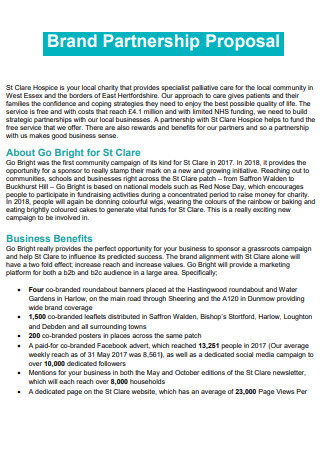
Sample Brand Partnership Proposal
download now -

Alcohol Brand Partnership Proposal
download now -
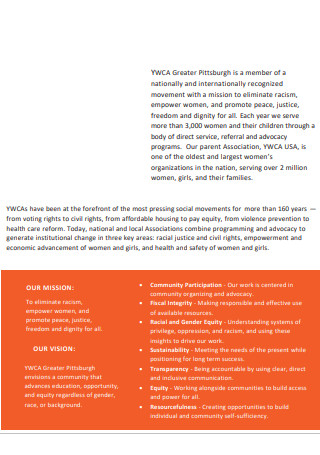
Corporate Brand Partnership Proposal
download now -
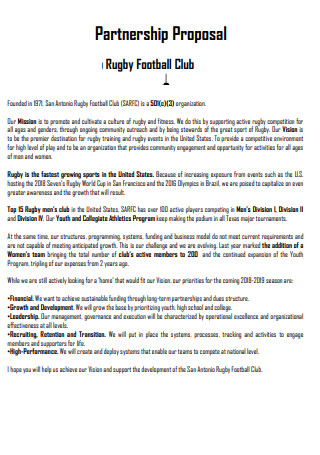
Sports Club Brand Partnership Proposal
download now -
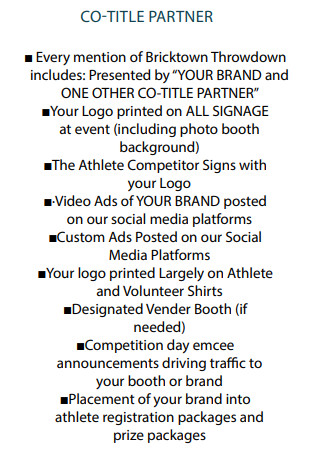
Brand Marketing Partnership Proposal
download now -
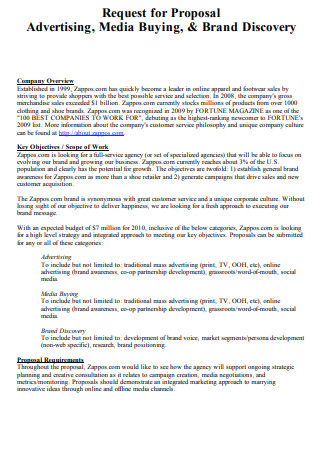
Simple Brand Partnership Proposal
download now -
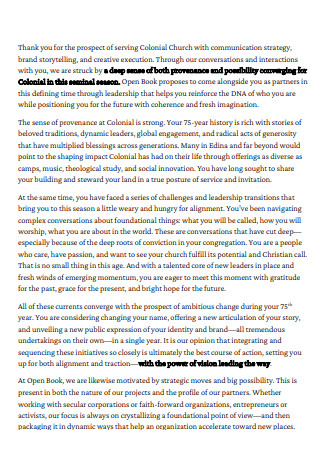
Basic Brand Partnership Proposal
download now -

Brand Awareness Partnership Proposal
download now
FREE Brand Partnership Proposal s to Download
7+ SAMPLE Brand Partnership Proposal
What Is a Brand Partnership Proposal?
Benefits of Brand Partnership
How to Create an Effective Brand Partnership Proposal
What are some of the tips when writing a brand partnership proposal?
What are the common ways to build a brand partnership?
What is contained in a brand partnership agreement?
What Is a Brand Partnership Proposal?
A brand partnership proposal is a document that aims to persuade a prospective brand partner to come into an alliance that’s designed to enter new and existing markets, increase sales, and produce new added-value services through brand collaboration. Likened to a roadmap, the proposal explains the goal of a brand partnership, gives details on how the business will be conducted, and the estimated cost, expenses, and the profit margin. Transparency should also be a core value of a brand partnership proposal. Hence, aside from the benefits, the risks are also outlined, but with action plans in anticipation of those risks. Overall, just like a marketing strategy, the goal of a brand partnership proposal is to win the prospective brand partner’s trust, get them to sign on in agreement, and ultimately, achieve the overall goal of winning the market and sales business.
Benefits of Brand Partnership
A brand partnership is often thought of as a marketing strategy or a strategic marketing alliance of two different brands, oftentimes called “co-branding”. They’re usually non-competitors and have come up with this brilliant idea of joining forces, collaborating, working together to increase each brand’s sales and reach a broader customer market. But we have also seen competing brands that have collaborated, such as H&M and Versace, and Ford and Harley Davidson. More often than not, before a partnership is even formed, the benefits of the collaboration are taken into utmost consideration before that dotted line in the contract is signed. Here are some of the benefits brought about by brand partnerships.
How to Create an Effective Brand Partnership Proposal
Creating an effective brand partnership is one of the marketing strategies to stand out among competitors and to boost the revenue for both companies. With all the new brands coming out of the market almost daily, businesses compete to stay on top through innovations or else stay relevantly competitive in the market. An alliance of two brands could generate a powerful impact, especially when it comes to market penetration. The key to that alliance is taking that first step through the creation of a brand partnership proposal. A brand partnership proposal should strategically lay out all the plans that could benefit both companies, at the same time present action plans in the event of any obstacles that hinder the businesses’ success. Read on to find out more about the common steps taken to create a brand partnership proposal.
-
Step 1: Executive Summary
An Executive Summary presents a background on the company proposing a brand partnership, the services and products offered, why there is a need for a proposal and a quick summary of the benefits that will be gained out of a partnership. An executive summary can include the mission statement. A Mission Statement outlines what your business can offer on behalf of the partnership. Since it is the first thing that a prospective brand partner reads in the proposal, the executive summary should be catchy, appealing, and compelling to the reader, and should make the reader want to read the rest of the proposal. Make sure that the executive summary’s sentences are brief and concise. Focus on highlighting the benefits, and remember that the goal of the executive summary is to keep the reader interested, which will eventually lead them to sign the agreement.
-
Step 2: Market Analysis
The Market Analysis section is where you get deep into the details of if and why there is a need for a brand collaboration in the current market condition. You can do this by doing a SWOT Analysis. SWOT is the Strength, Weaknesses, Opportunities, and Threats of a brand in the present market. Strength is what makes a brand unique and stand out from its competition. Weaknesses are those factors that hinder a brand’s success, such as a weak brand concept or design, lack of resources, et cetera. Opportunities are those the brand can leverage to boost its success, such as effective Marketing Strategies through the use of social media platforms, hiring talented and creative product designers, taking advantage of a current market trend, and so on. Threats are those elements that could potentially risk or harm a brand’s success, such as new regulations that limit the use of certain platforms for marketing, cyberattacks, plagiarism, and even the emergence of new competitors in the market.
-
Step 3: Positioning Brand Partnership as a Solution
This is the part where you present that having a brand partnership is the solution to the current market needs. Outline all the benefits that could come out of the partnership in terms of sales and marketing success. Present co-branding strategies, such as combining the two brands under one name and producing a unique product concept, or using the brands’ unique aspects as an added value to each company’s products or services. For a brand partnership, a Marketing Plan would be using the logo and design of the other brand, embedding it in the other company’s products, and producing a new product line. An example would be the Apple and Nike collaboration, wherein Apple uses its technology alongside Nike’s sports platform, thereby creating the Apple Watch Nike+, a perfect solution for runners who can conveniently use Apple’s technology while running. Another example of brand partnership strategy could be in the form of co-sponsoring events, promoting the partner brands on each company’s website and social media, co-sponsoring and promoting contests, and so on.
-
Step 4: Estimated Cost, Expenses, and Projected Revenue
The next thing to do is present the estimated costs and expenses that can occur out of the partnership. Expenses could come in the form of shared advertisement, manpower, resources, et cetera. Expenses could also be how much would it cost to create a whole new product line. In the case of the Starbucks and Spotify partnership, the cost could be in the form of software and media used, the cost of labor for the product design team, and the materials and resources incurred for the promotion campaign. The presentation of the cost and expenses should ideally be in half and half, meaning a shared equally computed budget coming from the two brands. Provide as well the projected revenue that would come out of creating a new product line. A projected revenue typically includes the net price for the new product or concept created, as well as the price for any added value availed by the customers. Nevertheless, make sure to include all areas where there is a possibility of generating revenue coming out of the brand collaboration.
-
Step 5: Terms and Conditions
To protect the rights of the businesses involved, the terms and conditions should also be laid out in the proposal. The terms and conditions should contain the duties and obligations needed to be fulfilled by both businesses, whatever legal rights are involved in case of disputes, settlements, or damages, the dates for how long the partnership will exist, and the terms for payment. Having the terms and conditions as part of the proposal can assure the prospective brand partners that they will be treated fairly and that everything will be met according to the guidelines and specifications presented.
FAQs
What are some of the tips when writing a brand partnership proposal?
Make sure to keep your sentences brief and concise, yet catchy, appealing, and compelling at the same time. Include words that have a call-to-action urgency. Present your strategies and action plans using statistics and visual aids. Include proof of how effective and successful a brand partnership can be by giving examples of some successful brand collaborations. Be transparent when presenting the risks, but also make sure to follow up with some action or contingency plans to counter those risks. Suggest upsell, cross-sell, and value-added opportunities. Stay focused on what are the benefits that could be reaped by both brands going into a partnership.
What are the common ways to build a brand partnership?
First is choosing the right brand partner that can complement your brand or a brand that shares the same vision and goal that your business has. A partnership could be built on the intention of generating revenue and increase in market share, or even just for a charitable cause. Once the brand signs on, start promoting your brand partner through the marketing plan and strategies outlined in the proposal. Be sure to keep a transparent and open communication relationship. Make sure that both brands are aligned to provide the need for the current market condition through creative concept collaboration and product or service development.
What is contained in a brand partnership agreement?
A brand partnership agreement identifies the rights of the brands involved, including the obligations, limitations, or restrictions. It defines the overall parameter of the partnership to protect and safeguard the brand partners. The agreement usually includes the duration of the partnership, the termination clause; the exclusivity clause; liability and damages; fees, expenses, and royalties; payment terms; as well a nondisclosure and confidentiality clause.
When the best of both worlds come together, that’s when the magic happens. This is what specifically happens when two brands come together to produce that unique concept that their customers are craving. We have seen evidence over the years how advantageous it would be to companies who engaged in brand collaboration. A brand partnership is not only beneficial to the companies in terms of revenue and market share, a brand partnership is also beneficial to the general public since they can now conveniently access and enjoy in one product the best benefits that are offered by the two brands. And it all begins with an effective brand partnership proposal presentation.
Dreaming of that successful brand partnership you always longed for? Try out our brand partnership proposal templates. Our proposal templates are well-drafted so that all you have to do is just to fill out the information that’s being asked, and then, just use that template as your presentation guide to your prospective brand partner. See how easy it is, download one now, and start taking that step towards creating a successful brand partnership journey!
